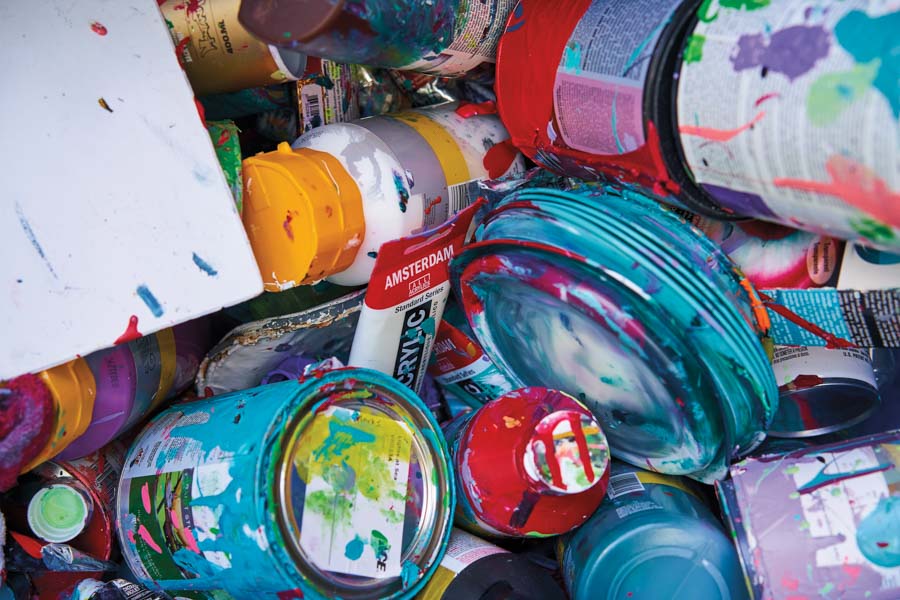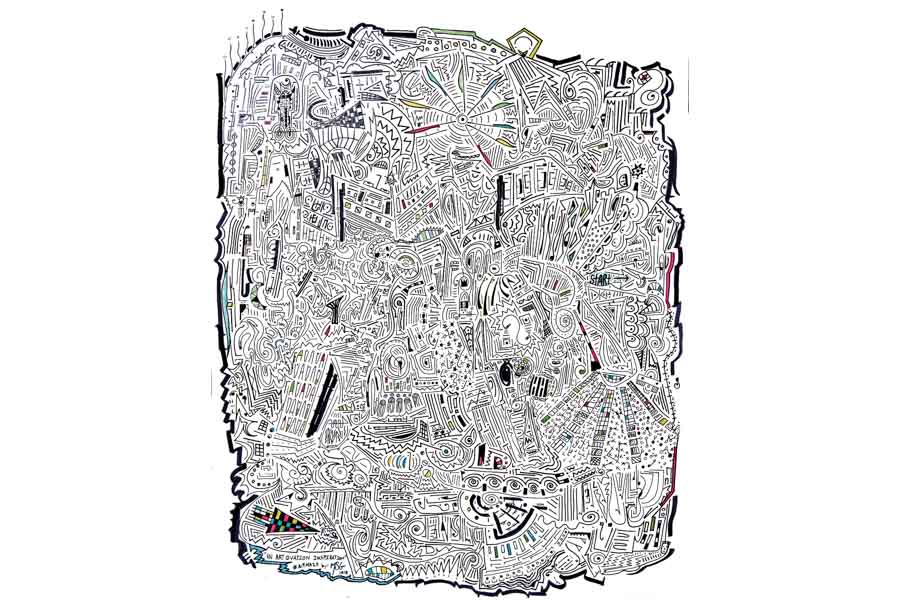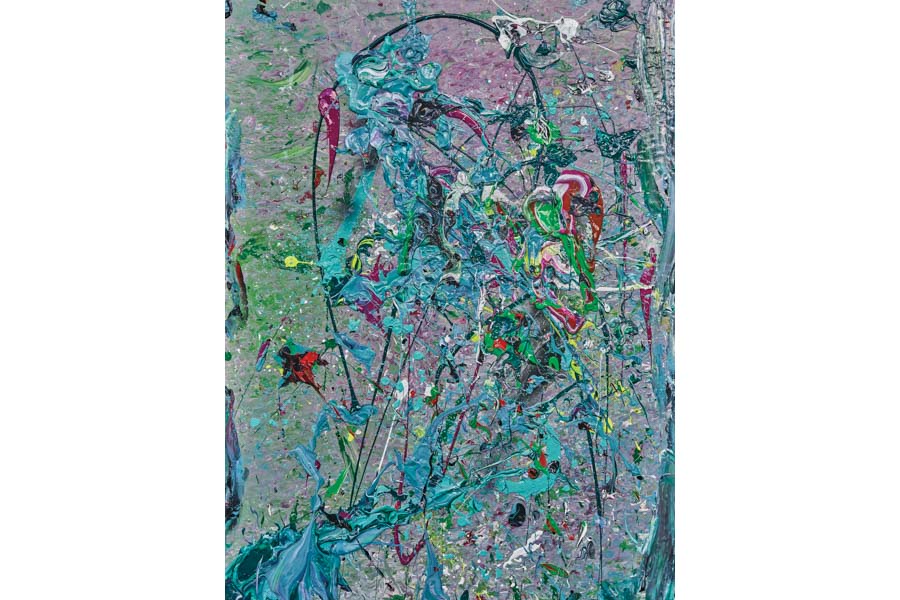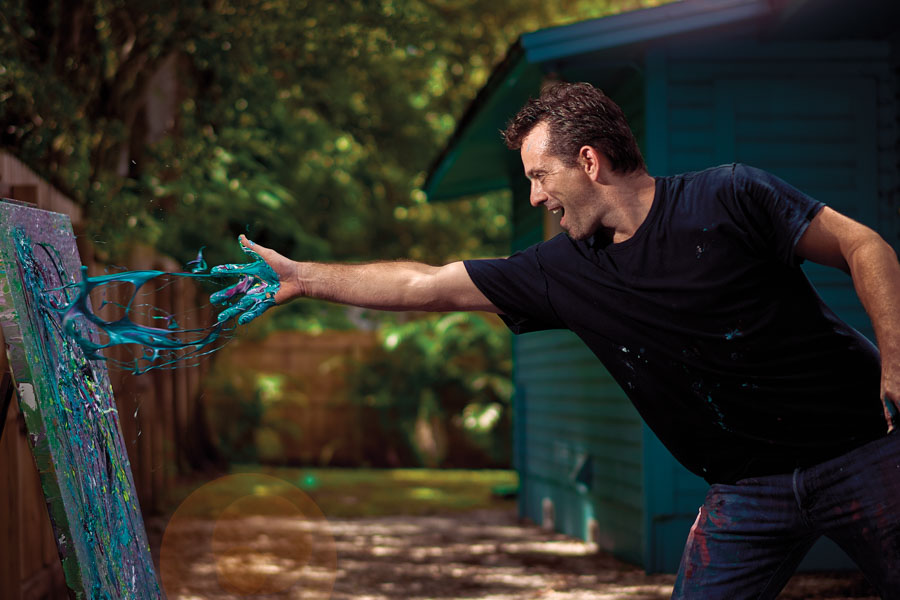“You can let everything go and have no plan,” he says. And while that may seem foolhardy wisdom from anyone wandering a maze, it sounds particularly counterintuitive coming from the person creating it. Faced with the broad, white expanse of possibility that is the blank page, Gagnon places the word “Start” and expands outward in an ink-black stream of consciousness, becoming lost in patterns and shapes as his pen seems to flow on its own.

It’s relaxing, meditative and, as with everything Gagnon creates, instinctual. Some sprawl as far as 15 feet long, others grow into three-dimensional constructions, leaping off the page like a pop-up book, but he embraces each new evolution as it comes, adapting with ease. “Eventually I’ll get to the word ‘Finish,’” he says, “and that’s the hard part.” But only twice has he reached the end and found no way out.

A self-taught artist with no formal training, Gagnon has never asked permission. “I never had the chance,” he says, too busy leaping from medium to medium, experience to experience, always searching for that next avenue of expression. At age 12, he was writing 200-page science fiction novellas (working the computer by memory and keystroke when his father would disconnect the monitor as punishment), only to reverse course a few years later to explore the concision and discipline of poetry. He plays music every day, a morning workout of what he calls “Future Folk”—something in the vein of Bob Dylan or Woody Guthrie, with acoustic guitar and intuitive lyrics—quietly releasing his layered compositions online. And, as anyone who visits the artist’s new home studio/gallery just outside the Bradenton Village of the Arts can readily see, the man also paints. A lot.

What Gagnon cannot express through his writing, music or mazes comes out in a flurry of color and carefully managed chaos on canvas—otherwise known as abstract expressionism. Largely eschewing paintbrushes, he relies on his fingers or flings paint straight from the tube in what he calls “precision throwing.” Though always acrylic, Gagnon plays with everything from color to viscosity to achieve his ends, yet a crucial aspect of the art remains a mystery, that final touch that Gagnon will not discover until he’s finished. “Even the most chaotic of my pieces—even the mazes—it’s just a metaphor for life,” Gagnon says. “It looks so complicated and so distracting and there’s so much going on, but if you can actually get in there and find a start, it’s really not that hard.”









